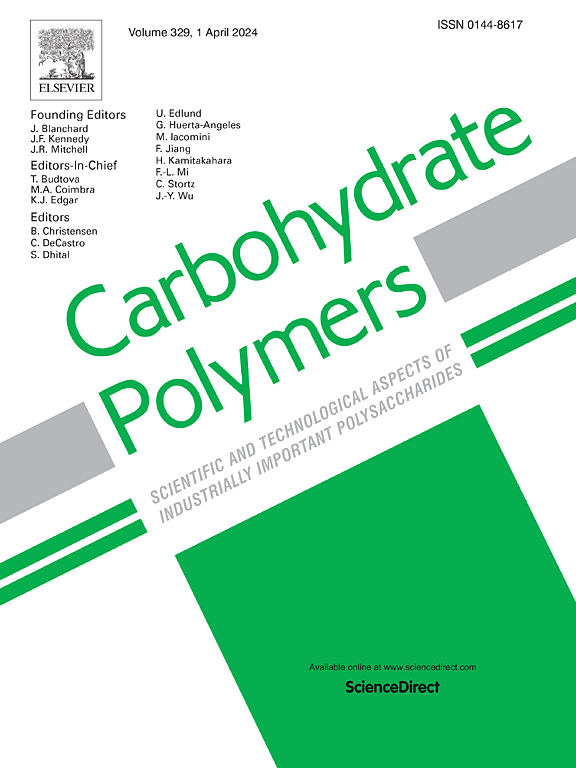The functions of rice SSIIa alleles in starch biosynthesis modulated by the distinct genetic backgrounds
IF 10.7
1区 化学
Q1 CHEMISTRY, APPLIED
引用次数: 0
Abstract
Natural variations in rice starch synthase IIa (SSIIa) gene confer different enzyme activities, leading to biosynthesis of starch with altered structures. To investigate the interaction effects of SSIIa and other starch synthesis-related genes on starch structural and functional properties, indica rice genotypes with different allelic combinations of SSIIa, Waxy (Wx), and branching enzyme IIb (BEIIb) were analyzed. Although SSIIa alleles exerted minimal effects on starch structures in the background of Wxb/BEIIb, SSIIaTT specifically reduced gelatinization enthalpy by enhancing amylose synthesis in the background of Wxa/BEIIb. Furthermore, the SSIIa × BEIIb interaction significantly modulated amylopectin B1 chain content: SSIIaTT increased B1 chains and decreased B3 chains, compensating for the deficiency of amylopectin synthesis caused by be2b. Although SSIIaGC elevated gelatinization temperature across diverse allele combinations, this effect was attenuated by be2b. This study demonstrates that SSIIa alleles interact with other starch synthesis-related genes to regulate starch biosynthesis, providing a novel theoretical foundation for biological modification of starch properties and improvement of rice quality.

不同遗传背景下水稻siia等位基因在淀粉生物合成中的作用
水稻淀粉合成酶IIa (SSIIa)基因的自然变异赋予了不同的酶活性,导致淀粉的生物合成结构发生改变。为了研究SSIIa与其他淀粉合成相关基因的互作对淀粉结构和功能特性的影响,本研究分析了不同SSIIa、Waxy (Wx)和分支酶IIb (BEIIb)等位基因组合的籼稻基因型。尽管在Wxb/BEIIb背景下,SSIIa等位基因对淀粉结构的影响很小,但在Wxa/BEIIb背景下,SSIIaTT通过增强直链淀粉合成特异性地降低了糊化焓。此外,SSIIa × BEIIb互作显著调节了支链淀粉B1链含量:SSIIaTT增加了B1链,减少了B3链,弥补了be2b导致的支链淀粉合成不足。尽管siiagc在不同的等位基因组合中提高了糊化温度,但这种效应被be2b减弱了。本研究表明,siia等位基因与其他淀粉合成相关基因相互作用调控淀粉的生物合成,为淀粉特性的生物修饰和稻米品质的改良提供了新的理论基础。
本文章由计算机程序翻译,如有差异,请以英文原文为准。
求助全文
约1分钟内获得全文
求助全文
来源期刊

Carbohydrate Polymers
化学-高分子科学
CiteScore
22.40
自引率
8.00%
发文量
1286
审稿时长
47 days
期刊介绍:
Carbohydrate Polymers stands as a prominent journal in the glycoscience field, dedicated to exploring and harnessing the potential of polysaccharides with applications spanning bioenergy, bioplastics, biomaterials, biorefining, chemistry, drug delivery, food, health, nanotechnology, packaging, paper, pharmaceuticals, medicine, oil recovery, textiles, tissue engineering, wood, and various aspects of glycoscience.
The journal emphasizes the central role of well-characterized carbohydrate polymers, highlighting their significance as the primary focus rather than a peripheral topic. Each paper must prominently feature at least one named carbohydrate polymer, evident in both citation and title, with a commitment to innovative research that advances scientific knowledge.
 求助内容:
求助内容: 应助结果提醒方式:
应助结果提醒方式:


